TUSHETI, Georgia — In the early days of October, the region of Tusheti, tucked away in Georgia’s Greater Caucasus mountain range, has already begun to change.
The green forests that blanket these peaks — still waiting for the season’s first snow — are now speckled by burnt orange and amber, the deciduous trees that herald a mountain range showing the first signs of fall.
In Omalo, Tusheti’s largest village, the dirt roads and ramshackle wooden houses are now quiet, with most of their summer inhabitants already returned back to the lowlands where they’ll wait out the winter. The only people left here are some shepherds, the few dozen Tush who will stay here throughout the winter, and Tinatin Ididze.
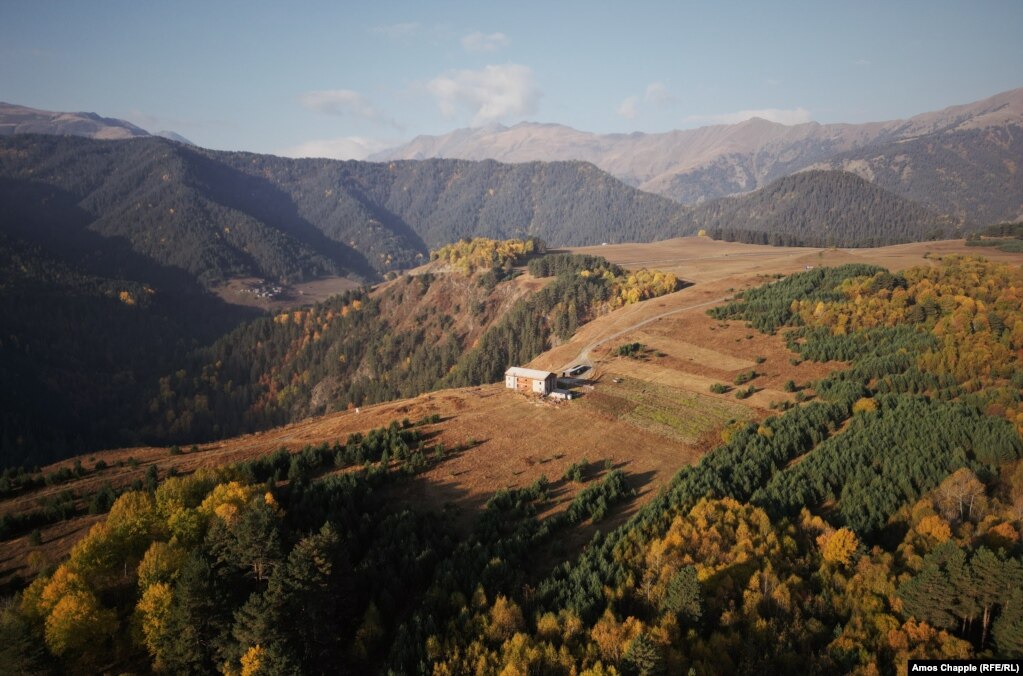
As the only woman who does the transhumance — the yearly seasonal migration of livestock from the highlands of Tusheti to the winter pastures of Vashlovani in eastern Georgia — Ididze cuts an unconventional figure in Tusheti’s male-dominated mountain culture.
“My family doesn’t mind me doing this, but they want me to be married and have kids,” she says with a smile.
Ididze, 38, was born in Alvani, a town at the foot of the Greater Caucasus and the place where most Tush live during the eight months of winter when the treacherous Abano Pass — the only road in and out of Tusheti — is closed with snow. Her parents hail from the villages of Baso and Beghela in Tusheti’s Pirikiti and Gometsari, two of four gorges that cut through Tusheti.

A region with rich ethnographic heritage, Tusheti is known across Georgia as the home to a long-standing shepherding community. But these days, an ever smaller number of Tush are continuing their ancient shepherding traditions, dispirited by the lack of any government support and lured by the more lucrative tourist business that has taken off in Tusheti of late.
Over the centuries, horses have been crucial to shepherds, providing them with a means of transporting wool and cheese across the mountains’ many undrivable parts, and finally from the Tusheti highlands to the lowlands at the end of the summer. In Tusheti, a decline in shepherding would mean fewer horses — and that could spell the end of the transhumance.
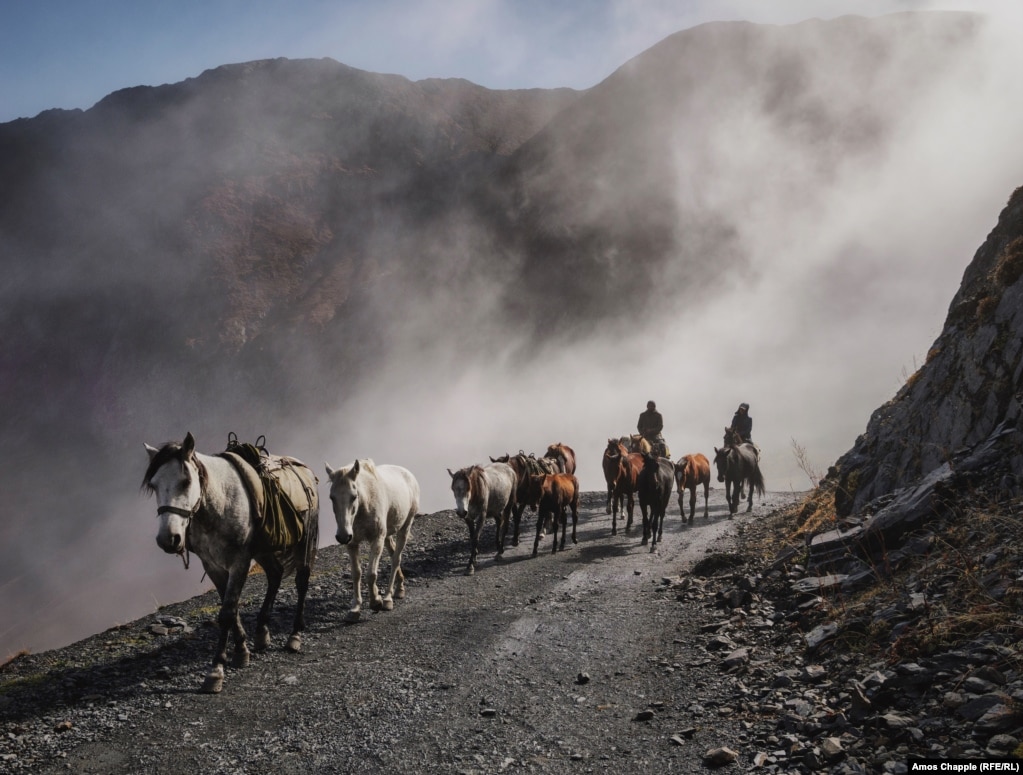
But where declining shepherding puts the horse migration at risk of obsolescence, tourism offers a chance of preservation. While some of the horses in the herd that Ididze migrates from Tusheti to Vashlovani and back again have helped shepherds in the summer months in the mountains, most are used as part of Ididze’s tourism excursions, which end with the migration at the end of the summer that experienced riders can join.
“Horse migration can be quite addictive,” says Ididze, who runs a successful adventure tourism business. “I like guiding, meeting new people. But the best thing is that horses are friendly. They feel your feelings and moods. With a horse, you’re one entire body. The speed of riding, the nature, the surprised faces of people seeing it’s a woman leading the horse drive.”

Six days of riding begin in Omalo, where Ididze and Tush horse caretaker Irakli Kotilaidze ride across Tusheti rounding up their few dozen horses after their summer months roaming free across the mountain range. The air above the plateau of Omalo is temporarily thick with dust kicked up by the horses Ididze and Kotilaidze jolt into action by cries and the crack of a whip on the ground.
For the first two days of the migration, the horses follow the same mountain road as cars. After following a dirt road cut out from the mountain that runs parallel to a river, day one ends at the base of the Abano Pass, where horses are kept from roaming far by a long rope nailed to the ground. With the deep valley a channel for cold wind, shots of home-brewed chacha, a grape-based spirit beloved across Georgia, are the only source of warmth.
“This second toast is to our ancestors and to the migration” says Ididze, following the traditional order of toast dedications. “Unfortunately, it’s dying out. Fewer and fewer young people want to do it. Our ancestors died defending this land for us.”
Much of the decline in Tusheti can be traced to the great rupture in modern Tush history: At the end of the 1950s, the government of Soviet Georgia designated the Tusheti region as pastureland only, forbidding its inhabitation by people and forcibly moving the entire population to the lowlands, banning their return.

A decade before, the Soviets had crushed the Samanelebi, an underground collective led by Tush intellectuals who opposed Georgia’s membership in the Soviet Union. Although a migration of Tush to the lowlands had happened gradually since the 19th century, the forced migration was, many Tush say, an attempt by the Soviet state to bring a freethinking mountain people under control once and for all.

Although a school, post office, and other infrastructure were again developed in Tusheti in the 1970s and ’80s, many Tush, newly accustomed to a warmer, more comfortable life in the lowlands, did not fully move back. In the 1990s, following the collapse of the Soviet Union, a newly independent Georgia was engulfed by civil war and widespread economic hardship, which led to a further decline in infrastructure.
“[The Soviets] took away the foundation for the life we’d been living here for centuries,” says ethnographer and ranger Nugzar Idoidze.
The 71-year-old has devoted his life to preserving Tush history and natural life, first through founding and directing Tusheti’s ranger house and later through curating Tush artifacts in various museums in Georgia’s capital, Tbilisi.
“Many shepherds say that the minute a shepherd hangs up the last crook on the wall, Tush history will come to an end,” Idoidze says.
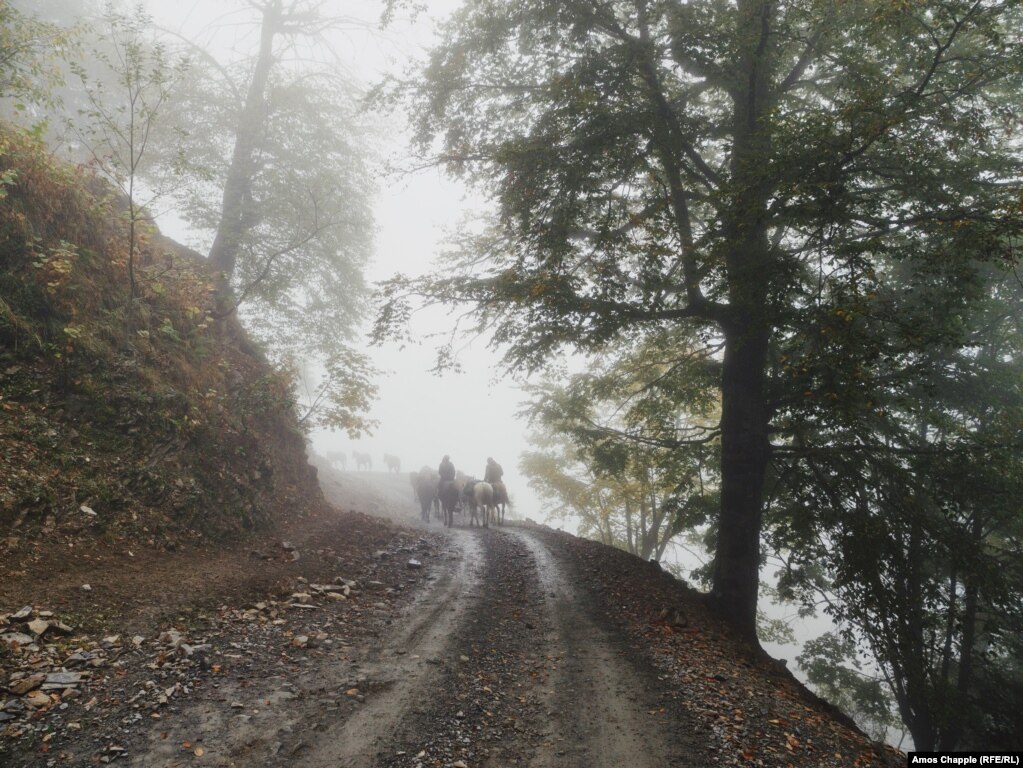
For the only part of the transhumance where the horses and sheep routes diverge, surmounting the Abano Pass, shepherds take a shortcut, bypassing the hairpin dirt tracks that snake vertiginously up and over the pass by taking a steeper, more direct route. In a single day, Ididze drives the horses up the Abano Pass and over along the road, ending 10 hours later in Alvani in the lowlands.
“Tushetian horses are special,” Ididze says. “They can carry cargo from 100 to 120 kilograms on rocky paths for many days. They are calm, need little water, and are short in stature, making them good for sharp turns on footpaths. They can control their bodies well. They’re trustful, too.”

Stories passed among the Tush about English and Arabic horses who perished on the Abano Pass only add to the local reverence for Tushetian horses. A speciality in Georgia, Tushetian horses are equipped with special horseshoes with a small heel, helping them cling onto the rocky mountain ledges.
Once at the summit, the road down the other side is long and windy (it once featured in a BBC documentary on the world’s 10 most dangerous roads) making the horses’ kicks and bites to one another a potentially perilous game given the cliff drops are never far away.
From the lowlands, the horses follow the one and only transhumance route, usually shared between sheep, horses, and cattle. From Alvani, the route remains flat, following along tracks through fields and country lanes, with the Greater Caucasus mountains towering in the distance on the left, fields of vineyards in their shadow for miles.
Kakheti, Georgia’s easternmost province, is one of the driest parts of the country and one of Georgia’s main wine-making regions. By early October, the rows of vines are punctuated with grape trucks, the rumbling sound echoing in the distance as they trundle past, heaving with grapes.
At the end of each day of riding, the final stretch often feels like a race, the urgent thundering of the horses’ hooves heard as they head toward the evening pasture to graze.
The route of the migration lays bare a part of Georgia and the countryside that non-locals rarely see. With many of these encampments and country roads distant from the main thoroughfares and villages, life revolves around animals and the seasons. But such a life is only becoming more difficult, with problems arising over the use of winter pastures.
In Soviet times, the land through which the migrating animals would pass and graze belonged to the state. Now, the government has sold much of this land to private individuals, many of whom have turned the land over to grain production, leading to fewer pastures.
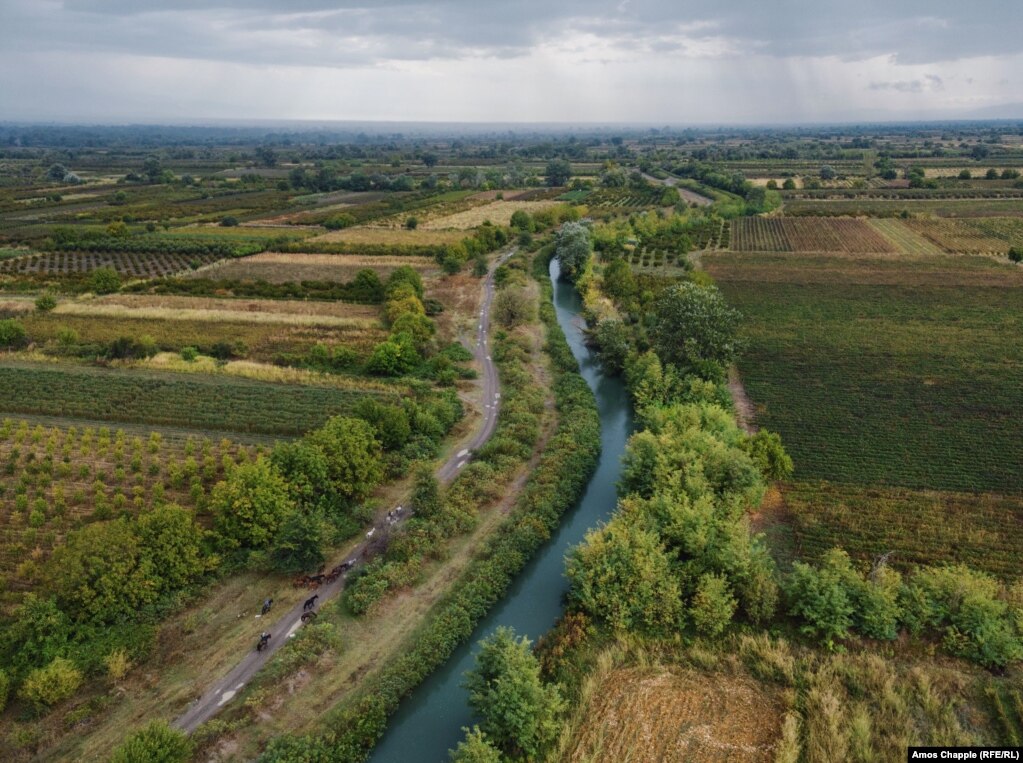
“It would be great to have long-term leasing of grazing pastureland,” says Ididze. “We don’t ask for subsidies. We need affordable taxes for land. There’s exploitative subletting of the land. The guys who look after my horses re-rent land for pasture from someone else that should cost 3 lari (just over $1) per hectare but costs 25.
“I remember seeing the transhumance as a child,” says Ididze. “I remember huge herds of horses in Omalo, but it never entered my mind that I would one day do that.”
The 1990s in Tusheti, though difficult and full of manual labor, was still easier than life in Tbilisi, which was ridden by power cuts, gang crime, and food shortages.
“Tusheti was full of people, livestock, and lots of hard work. We had to milk cows, make butter, cheese, and cultivate potatoes. We had to cultivate everything, but compared with people in Tbilisi, at least we had food,” she says.
Ididze’s gentle manner with the horses stands in stark contrast with the Tush horsemen, whose heavy-handed approach and use of a whip, though effective, can sometimes work against them. One morning, one of the horses eluded Kotilaidze’s attempts to catch her. For all of Kotilaidze’s mastery, it was Ididze, who doesn’t use a whip, who was able to walk up to the horse and bring her back.
Ididze’s memories of the hard manual work of life in Tusheti as a child encouraged her to seek out a different life.
“It was because of how hard things were in Tusheti that made me want to escape from this lifestyle,” she says. “Milking cows, cutting grass with a hoe; we did everything by hand. It didn’t matter if it was raining. You have to work, regardless. I started doing this kind of work around age 10.”
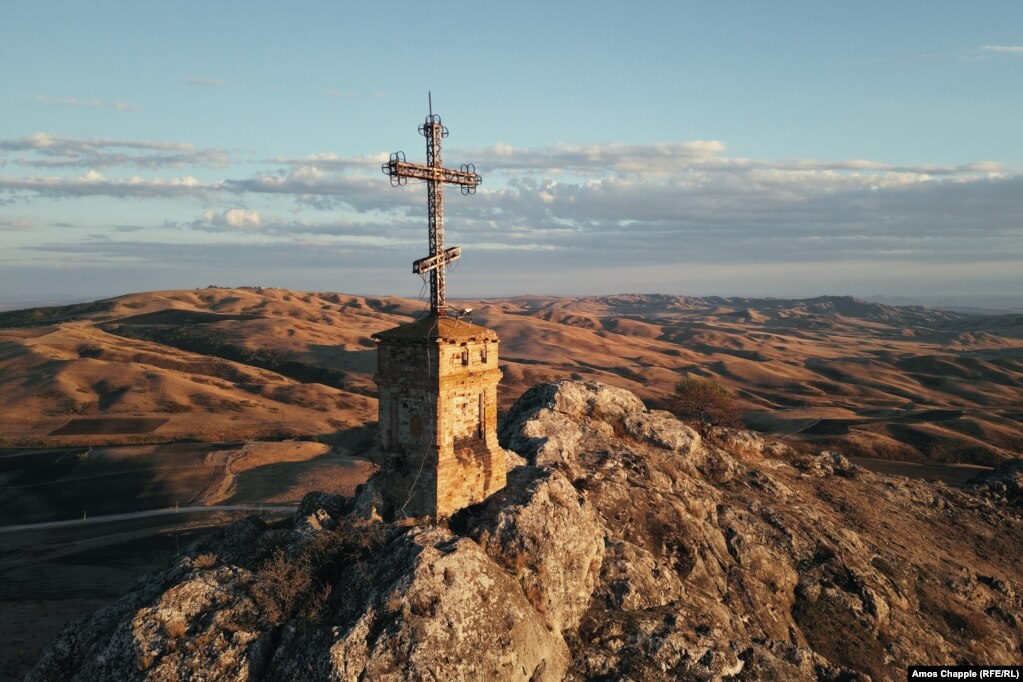
Ididze’s success as a horse herder and as a pioneer in ethno-tourism — both despite and because of the inversion of the traditional gender roles in Tusheti — could help reverse the decline of the mountainous region. In a modern Georgia overreliant on tourism, and with many of the country’s historic cultures being lost to young generations of Georgians migrating to cities and abroad, finding sustainable ways to preserve history is an increasingly urgent challenge.
After two more days of riding along dirt paths and narrow riverbanks in Kakheti, the landscape opens out to the undulating brown hills of Dedoplistskaro. The martian landscape is popular among bird-watchers, and still, in the early weeks of October, murmurations swoop overhead.
It isn’t long before the herd enters the wildlife-filled long grass and rolling hills of Vashlovani on the final day of riding, passing through a curiously isolated Soviet-built village, Eldari, that is still clinging to life. Built in the 1960s by the Soviets as an industrial center for the area, much of Eldari has been destroyed. But laundry being hung outside latrines by women and new, plastic windows offer evidence as to the life still being lived here.

Not far from the stables further along, Ididze and Kotilaidze ride up one of the hills, and decide on a spot for the horses. For the next month, the horses will graze here, tied to long pieces of rope to ensure they get used to their surroundings and don’t wander off later in the season. In a few weeks, they’ll be released by Kotilaidze, free to roam and graze until the early summer, when Ididze will return to collect them and take them back up to Tusheti.
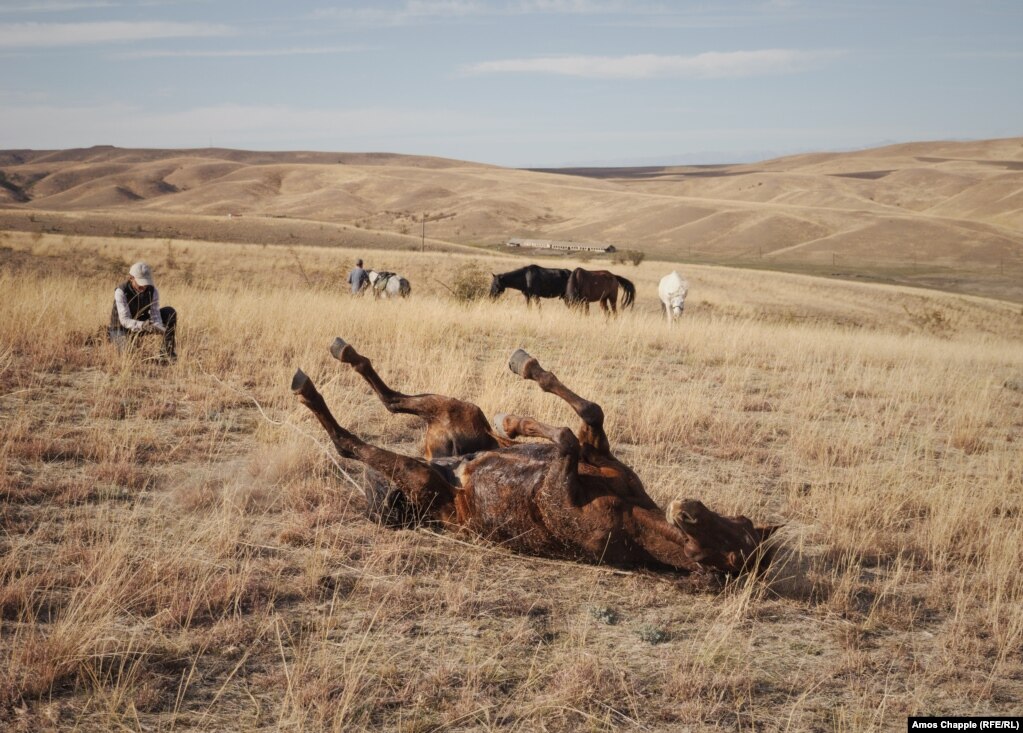
As the light wanes over Vashlovani, early evening half-light flashes over the mountains in the distance, illuminating craggy rock and tufts of burnt grass, a light sprinkle of white snow now dusting the peaks.





